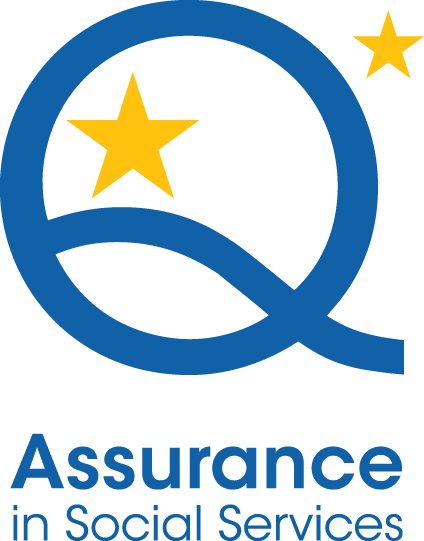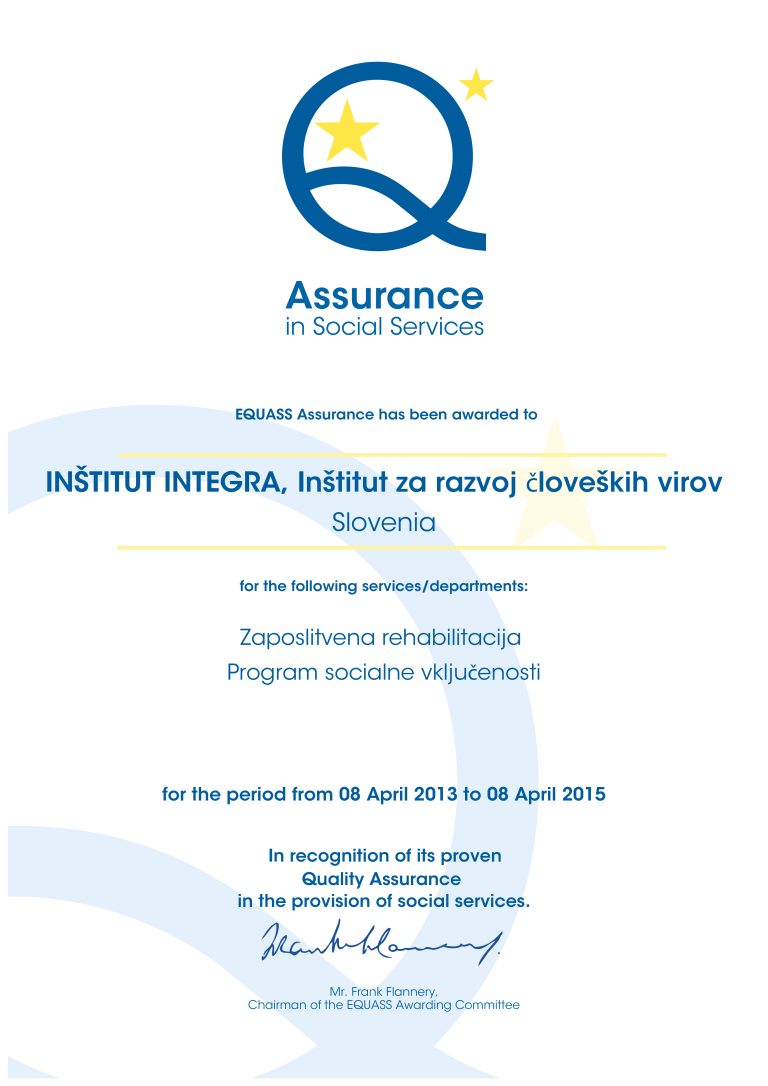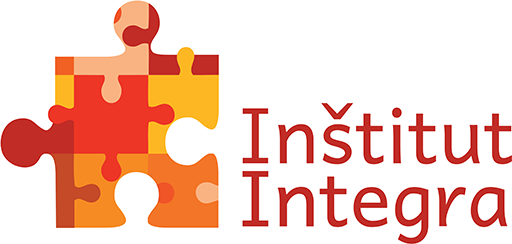The purpose of the EQUASS Quality Management is to establish appropriate procedures and instruments for monitoring and ensuring quality, and to ensure the involvement and integration of employees who are involved in all the Institute’s processes and contribute to quality assurance.
The Quality Code defines how data is collected and records are kept in areas that are key to the Institute’s activities and to contributing to its quality and visibility. Continuous and systematic monitoring of these areas is a prerequisite for identifying areas of excellence, strengths and weaknesses and is the basis for planning improvements.
The Quality Manual is the overarching document of the quality management system, which defines the elements that we implement to achieve our quality objectives. All employees are involved in the formulation of the quality policy and objectives and in ensuring the functioning of the system.
The Rules of Procedure describe the system’s operation and processes, and cover the field of social and rehabilitation services. They aim to achieve the following objectives:
- excellence in the quality of work in all areas of the Institute’s activities
- Respecting and fulfilling the Institute’s mission, vision and values
- the organisational and human resources capacity of staff
- Continuous education, training and motivation of staff
The Institute has a three-member Internal Quality Review Group appointed by the Director for a period of four years. The Group reports on its work at least once a year to the Management, the Council and the staff. The management provides the members of the internal quality group with the conditions for education, training, the acquisition of relevant literature and participation in consultations and conferences in the field of quality assessment and quality assurance. At the operational level, evaluation of the performance of individual processes takes place in the form of regular professional supervision and internal audits. Documented information is kept on the performance of the internal audit.



